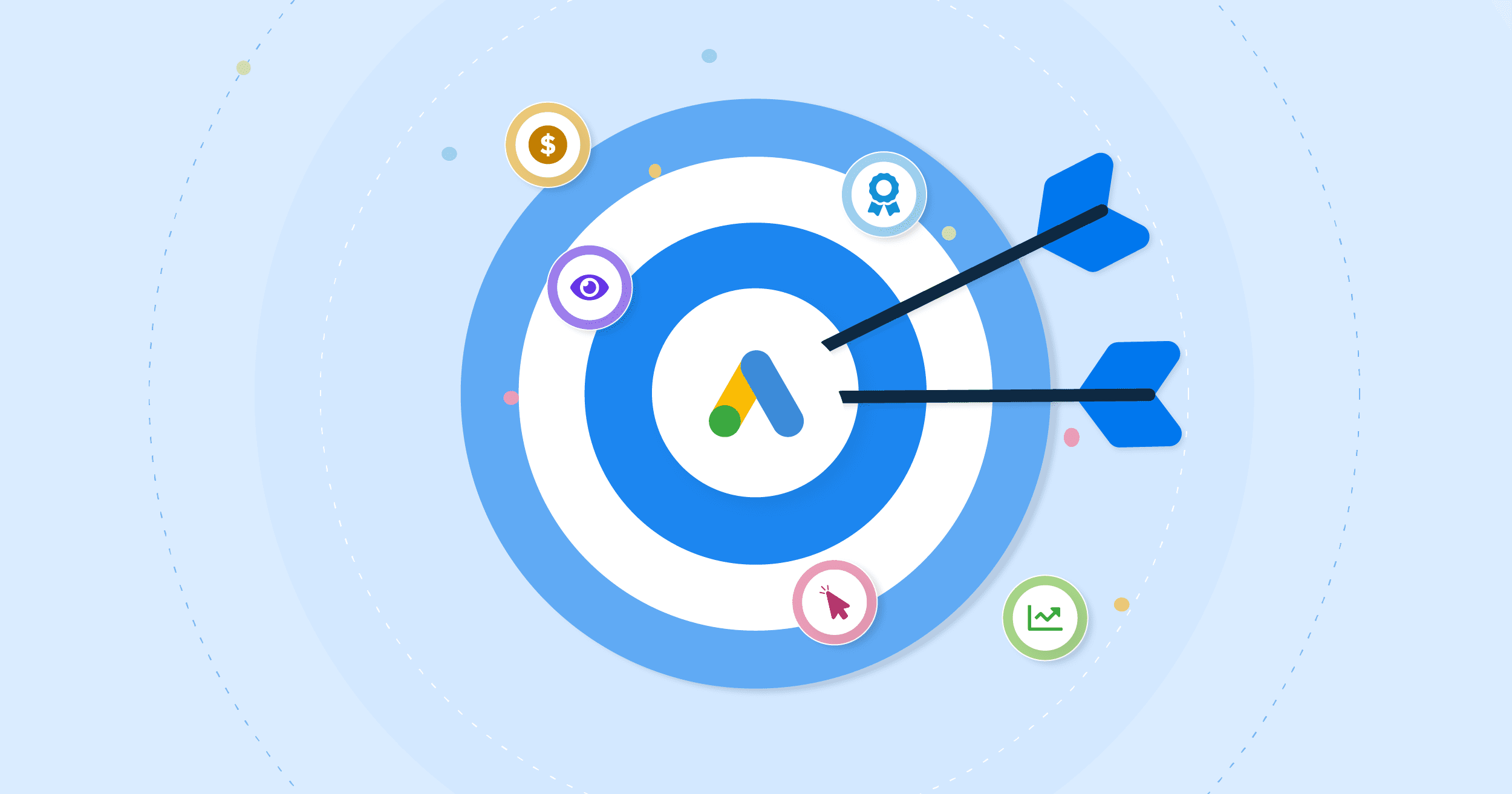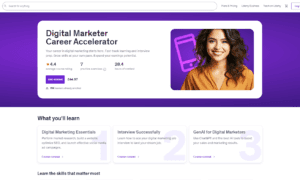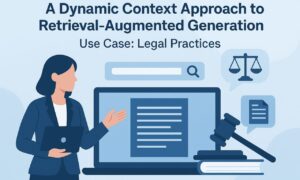Mastering Google Ads, especially in regional markets, has become essential for marketers aiming to enhance their business visibility. For instance, “Google Ads Northampton” is more than a local search term. It represents a gateway to unlocking the immense potential of online advertising in this specific area.
This article seeks to unveil the strategies employed by top marketers to leverage Google Ads in local markets, such as Northampton.
Understanding Google Ads: A Brief Primer
Google Ads, formerly Google AdWords, is a powerful online advertising platform allowing businesses to display ads on Google’s search engine and other Google properties. It operates on a pay-per-click (PPC) model, where you bid on your selected keywords and pay for each click on their advertisements.
This tool is indispensable for modern businesses due to its ability to target your audience precisely. Customization and targeting capabilities make Google Ads a versatile tool, enabling your business to tailor your approach to meet specific marketing objectives.
Secret #1: Deep Market Research and Target Audience Identification
To excel in Google Ads, you first need to know your market and who you are targeting. Here’s how you can do this effectively:
Understand Your Market
Get a clear picture of the environment where your business operates. Look at trends, competitors, and what’s currently in demand. This will help you position your product or service effectively.
Identify Your Target Audience
Determine the people who will most likely buy your product or service. Consider factors like age, location, interests, and income level. This step is crucial for tailoring your Google Ads to the right group of people.
Use Tools for Research
Leverage tools like Google Analytics and keyword planners. These tools can inform you about who visits your website, what they search for, and how they behave online.
Conduct Customer Surveys
Consider asking your audience directly. Use surveys to gather feedback about their needs and preferences.
Segment Your Audience
Not all customers are the same. Segregate your audience into smaller groups based on shared characteristics. This makes your advertising more targeted and effective.
Secret #2: Crafting Compelling Ad Copy
Creating an effective Google Ad boils down to having ad copy that grabs attention and convinces people to act. Here’s how you can make your ad copy stand out:
Engaging Headline
Use a headline that catches the eye. Make it relevant and exciting. Your headline is the first thing people see, so it should make them want to know more.
Clear and Informative Description
Your ad’s description should clearly explain what you’re offering. Include critical details that your audience cares about. This helps them understand why your product or service is what they need.
Strong Call-to-Action (CTA)
End with a CTA that prompts action. Use phrases like “Learn more,” “Sign up today,” or “Get started” to encourage clicks. A good CTA is direct and tells the audience exactly what to do next.
Use Emotional Triggers
People often respond to emotions. Emotional appeals in your ads, such as excitement, happiness, or even fear of missing out, can be very effective.
Ask Questions or Use Statistics
Questions can spark curiosity, and statistics provide compelling reasons to believe in your product or service. Both are great tools to make your ad more engaging.
Align with Your Audience’s Interests
Finally, make sure your ad speaks to what your audience cares about. Tailoring your message to your audience’s interests makes your ad more relevant and persuasive.
Remember, your ad aims to inform and encourage your audience to take the next step. Keep it concise, focused, and aligned with your audience’s needs.
Secret #3: Leveraging Ad Extensions
Ad extensions are powerful tools in Google Ads that can significantly enhance your ads. Here’s a straightforward guide to using them effectively:
What Are Ad Extensions?
They’re features that add more information to your standard Google Ads.
This information can include your phone number, business location, additional web page links, and more.
Types of Ad Extensions:
Call Extensions
Add your phone number to the ad. Useful if you want customers to call your business directly.
Location Extensions
Show your business address. Great for attracting local customers.
Site Link Extensions
Provide links to specific website pages, like product pages or contact forms.
Why Use Ad Extensions?
They make your ads more extensive and informative, helping them stand out. Extensions often lead to higher click-through rates because they offer users more options to interact with your ad.
Choosing the Right Extensions
- Select extensions that match your business goals. For example, use call extensions if phone calls are essential for your business.
- Align extensions with your campaign objectives. Location extensions are great for local campaigns, while site link extensions help drive traffic to specific pages.
Best Practices
- Keep the information in your extensions accurate and up-to-date.
- Regularly review which extensions are performing well and adjust accordingly.
Ad extensions are a simple yet effective way to enhance your Google Ads. They provide additional information and options for potential customers, helping to increase the effectiveness of your ads.
Secret #4: Optimizing Landing Pages for Conversion
When you run a Google Ad campaign, the journey doesn’t stop with a click on your ad. What’s equally important is what happens next – on your landing page. Here’s how you can optimize it for better conversions:
Align Message with Ad Copy
Your landing page should reflect the message in your ad. If your ad mentions a special discount, the landing page should immediately highlight that discount. This consistency reassures visitors that they’ve come to the right place.
Simple and Intuitive Design
Keep your landing page design clean and straightforward. Avoid clutter and focus on what’s important. A well-organized page with easy-to-read fonts, contrasting colors, and relevant images or videos can keep visitors engaged.
Clear Call-to-Action
Your CTA tells visitors what to do next – whether it’s to buy a product, sign up for a newsletter, or download a guide. Make sure it’s bold, stands out, and is easy to find. Phrases like “Buy Now,” “Sign Up Today,” or “Get Your Free Trial” are direct and effective.
Seamless Experience from Ad to Landing Page
Ensure that transitioning from your ad to the landing page feels smooth and relevant. If your ad promises something, your landing page should deliver it without making visitors search.
Focus on Relevance and Clarity
Every element on your landing page should add value and clarity. Remove anything that distracts from your main message or goal.
Remember, your landing page is where you convert visitors into customers. Make it easy and appealing for them to take the desired action.
Secret #5: Utilizing Advanced Targeting and Bidding Strategies
Getting the most out of your Google Ads budget means effectively using advanced targeting and bidding strategies. Here’s a straightforward guide to doing this:
Advanced Targeting Options:
- Demographic Targeting: Reach people based on age, gender, income level, etc. This is useful for ads meant for a specific group.
- Geographic Targeting: Target your ads to people in specific locations, from countries to cities. Ideal for local businesses or region-specific offers.
- Device-Based Targeting: Show your ads on specific devices like smartphones, tablets, or desktops. This is helpful if your product is device-specific or you know which devices your customers prefer.
Bidding Strategies:
- Cost-Per-Click (CPC): You pay each time someone clicks on your ad. This is good for driving traffic to your website.
- Cost-Per-Acquisition (CPA): You pay when someone takes a specific action, like purchasing or signing up. This strategy is beneficial if your goal is conversions.
Using Strategies Efficiently:
- Determine your campaign’s main goal (e.g., brand awareness, sales, leads) and choose the targeting and bidding strategies that align best with this goal.
- Regularly review the performance of your ads. Feel free to try something different if a particular targeting option or bidding strategy isn’t working.
By understanding and applying these advanced options, you can place your ads more effectively, ensuring they reach the right audience at the right time and make better use of your advertising budget.
Secret #6: Continuous Testing and Data Analysis
Testing and analyzing your Google Ads campaigns is crucial to make them as effective as possible. Here’s how to do it straightforwardly:
A/B Testing
This involves comparing two versions of your ad or landing page to see which one performs better. Change one element at a time, like the headline or image, so you know what’s making the difference. This method helps you understand what resonates best with your audience.
Analyzing Campaign Data
Regularly check how your ads are performing. Look at metrics like click-through rates, conversion rates, and the cost per conversion. This data tells you a lot about user behavior and the effectiveness of your ads.
Identifying Improvement Areas
Use the data you gather to find out where you can make changes. One ad isn’t getting many clicks, or a landing page isn’t converting as expected. These are areas you can focus on to improve.
Making Data-Driven Decisions
Let the data guide your decisions. Consider applying that success to other areas if something works well. If something isn’t working, think about what changes you could make.
Remember, continuous testing and analysis are about learning what works and what doesn’t and then using that knowledge to make your campaigns more successful. It’s a process of constant improvement.
Conclusion
Mastering Google Ads is a journey of continuous learning and adaptation. By understanding these secrets top marketers use, you can significantly improve your Google Ads campaigns. Remember, the goal is to attract clicks and convert those clicks into tangible business results. Whether you’re a seasoned marketer or starting, these strategies will help you harness the power of Google Ads to achieve your business objectives.



































